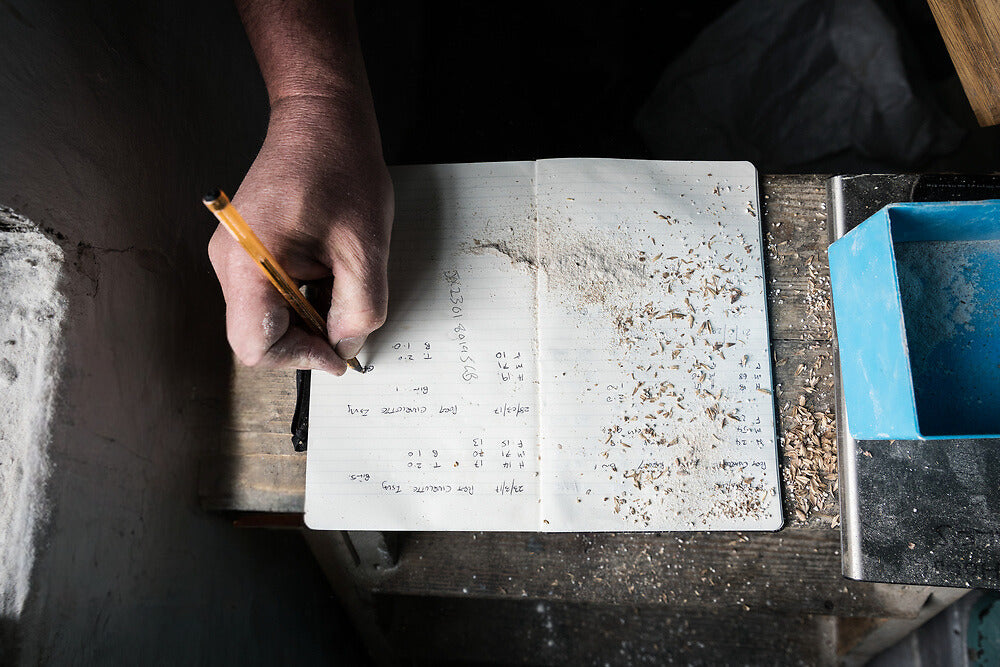A Fine Balance: Walking the line between Victorian and Progressive
- 5 mins
Exploring Bruichladdich Distillery's balance between preserving its Victorian roots and embracing modern efficiency during its essential maintenance season.

Exploring Bruichladdich Distillery's balance between preserving its Victorian roots and embracing modern efficiency during its essential maintenance season.

Every year distilleries across Scotland undergo a “silent season” when they shut down for maintenance. (A note to our travelling whisky enthusiasts: make sure you’re not planning a distillery tour on a shutdown date.) Although it halts production and tours in some distilleries, it’s an essential part of the operation. It may come as a surprise that on Islay a number of distilleries shut down during the summer — peak tourist season. The reason is a practical one: water tables are at their lowest in the warmer months, which means there’s less water available for distilling.
Shutdown is necessary for all distilleries, but particularly so for any utilising equipment dating back decades or longer. Where modern equipment has all the bells and whistles to alert the operator of every ailment, that’s not entirely the case for those employing age-old methods. It also means a longer maintenance period as parts are difficult to source, and engineers with the know-how (and the willingness to adapt) are scarce.
This year there are 13 projects underway at Bruichladdich Distillery during shutdown, including the refurbishment of the mash tun rake, replacement of the malt intake conveyor and auger, a boiler service and testing (much like taking your car for its MOT), and the installation of a new ultrafiltration system for the cooling tower.
The biggest project that’s underway this year is the renovation of the malt intake system: primarily the replacement of the conveyors and elevators that take the malt from the truck into the storage bins and the renewal of the auger that pushes it all the way through to the mill. The current equipment is estimated to be from the 1960s; at this stage, it’s nearly impossible to find replacement parts for repairs. The new system will be more energy efficient and easier to clean and maintain.

THE BIGGEST PROJECT THAT’S UNDERWAY THIS YEAR IS THE RENOVATION OF THE MALT INTAKE SYSTEM
Though committed to retaining its Victorian roots where it makes the greatest difference to the spirit produced, Bruichladdich Distillery also seeks to modernise where it can for greater efficiency. Water usage is one such area that’s getting a facelift this season. The distillery funnels off rainwater that runs from the reservoir out to sea, taking it from the river that flows alongside the distillery and using it for washing, mashing, and cooling. It’s unnecessary to filter the water for the mash as impurities are removed during distillation, including inorganic compounds, hard minerals, and particulates. The boiling process also kills any microorganisms. However, to allow us to use this water source in the cooling system and to recycle the water, thereby reducing our water usage, we are installing an ultra-filtration system which removes any impurities and organic compounds, then cleans the water, and reduces the dependency on chemical treatments.

INSTALLATION OF A NEW STORM DRAINAGE SYSTEM IN THE DISTILLERY COURTYARD
Annual maintenance at a progressive Hebridean distillery begs the existential question of where to keep to tradition and where to modernise; it’s not an easy subject to grapple with. So how does a distillery that’s both proud of its Victorian roots and committed to a sustainable future decide what stays and what gets replaced?
Production Director Allan Logan remarks: “Things like conveying and elevating malts, storage things…there’s nothing really romantically connecting us to it—they’re just functional elements. The mill, the mash tun, the washbacks, and the pot stills they’re the fundamental parts of the process we try to keep as traditional as we can. That said, it’s a working distillery so we have to maintain it. So, the mill, for example — it’s still the original, and it’s still maintained in the same way. But every time we get the opportunity with suppliers offering alternatives, we have to keep holding onto our beliefs that this is the right thing to do. At a time we’re under pressure to make efficiencies in energy use and costs, for example, it’s hard.”
Allan cites the mash tun, built in 1881, as another example. Bruichladdich has one of the few remaining open-top mash tuns in the industry. It’s a point of pride and a distinctive element in what makes our whisky what it is. Of course, it would be much more efficient if it were covered. Covering it, though, leads to other questions. If it’s covered, why not use a modern, stainless-steel mash tun for even greater efficiency? Maintenance costs come down; energy costs come down.

THE REFURBISHMENT OF THE MASH TUN RAKE UNDERWAY
The questions pop up like mushrooms all down the line, and if you say yes to modernisation and efficiency at every point, you very quickly lose your Victorian roots—and that impacts the whisky’s signature style.
“We do continuously ask ourselves these questions” says Allan. “On one hand it’s tempting, but at the same time we feel we’ve got a strong need to try and protect something that is so old and still working.”
Automation is another challenge. Today, everything is automated and computerised. So, when the distillery team wants to make an improvement, they need to convince an engineer or manufacturer to design something that’s simpler and fits with the older distillery equipment.
The decision to keep things manual may not always make logical sense, but it’s something the distillery feels is fundamental to its essence. The distillation process, for example, isn’t automated and computerised as you’d find in most modern distilleries. The stills are run by an operator (our dear Budgie, in this case) who needs to be tuned in every step of the way. Even the log is recorded manually with a notebook and pencil, adding an extra step in the process as those notes need to be punched into the computer system.
Call it nostalgia. Call it romance. We call it the key to what makes our whisky special. It’s what gives it an extra intangible something — a something we’re not keen to part with. After all, the sweet spot in life is usually found in the balance between basking in life’s timeless moments and pushing progressively towards the future.
DISCOVER THE LATEST STORIES AND NEWS FROM BRUICHLADDICH DISTILLERY

Please enter your birth year
Location
You must be of legal drinking age in your location of residence to enter bruichladdich.com. By entering our website you agree to our Terms & Conditions and Privacy Policy. We encourage you to enjoy our single malts responsibly.
You must be of legal drinking age in your location of residence to enter bruichladdich.com. By entering our website you agree to our Terms & Conditions and Privacy Policy. We encourage you to enjoy our single malts responsibly.
You must be of legal drinking age in your location of residence to enter bruichladdich.com. By entering our website you agree to our Terms & Conditions and Privacy Policy. We encourage you to enjoy our single malts responsibly.
You must be of legal drinking age in your location of residence to enter bruichladdich.com. By entering our website you agree to our Terms & Conditions and Privacy Policy. We encourage you to enjoy our single malts responsibly.